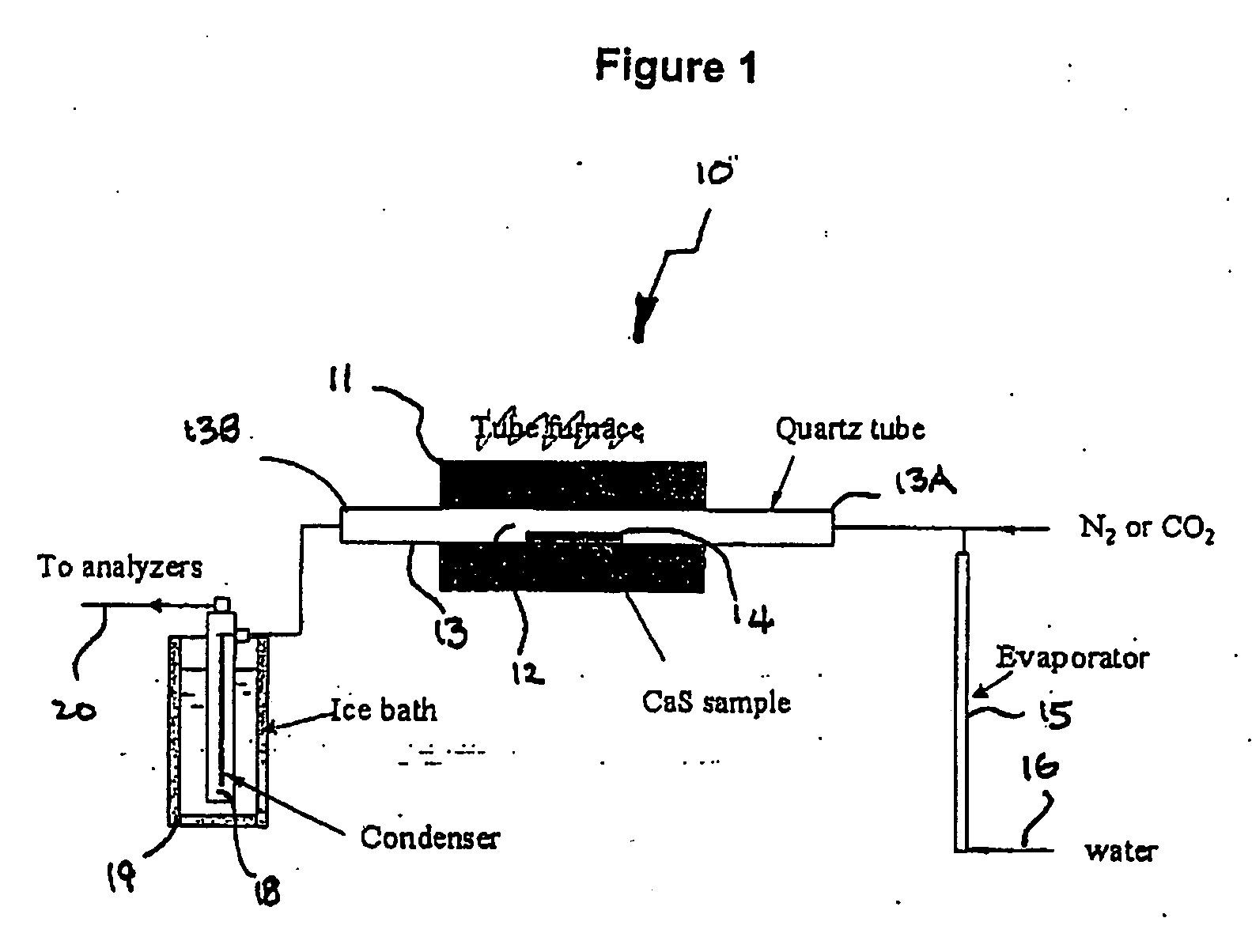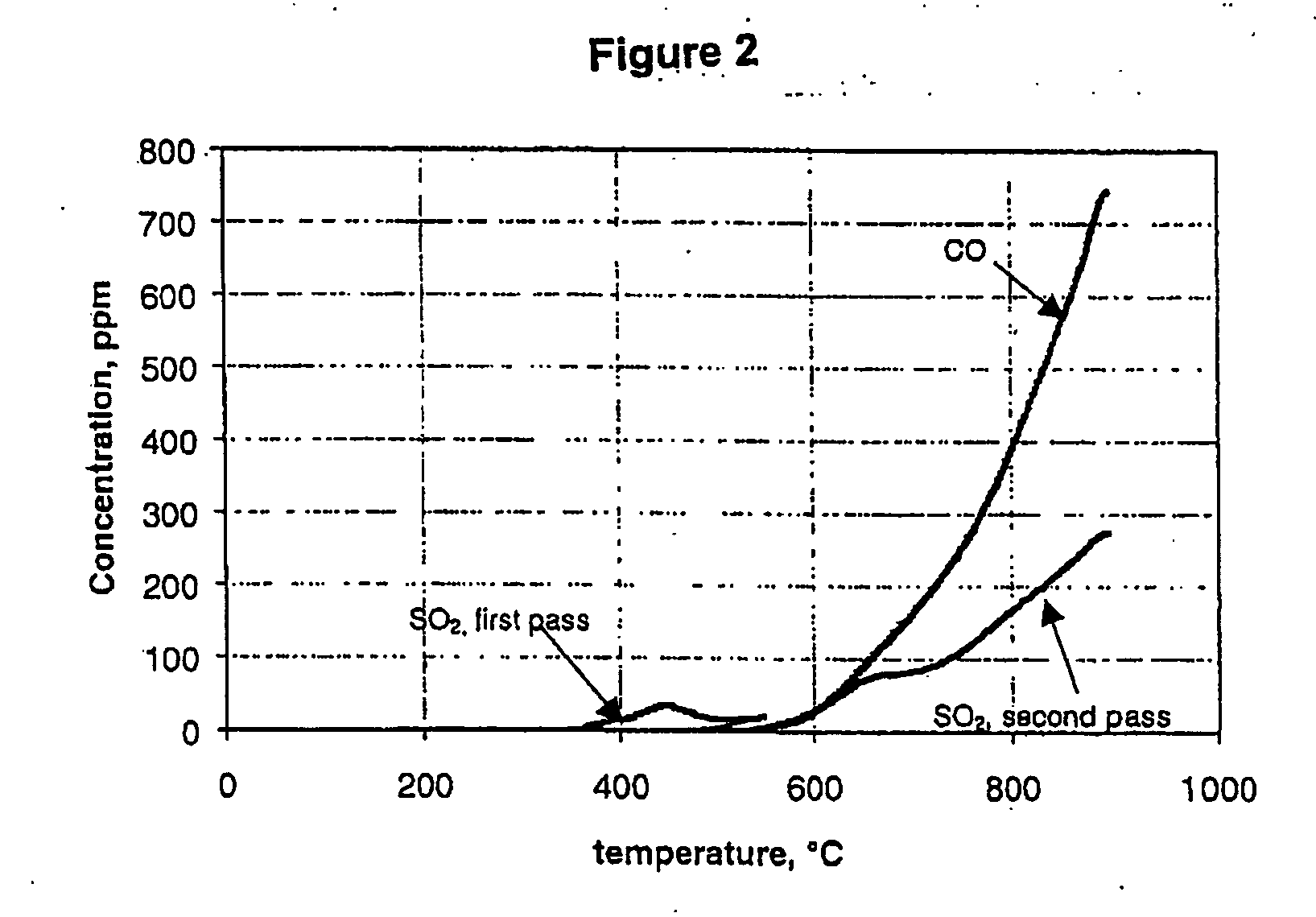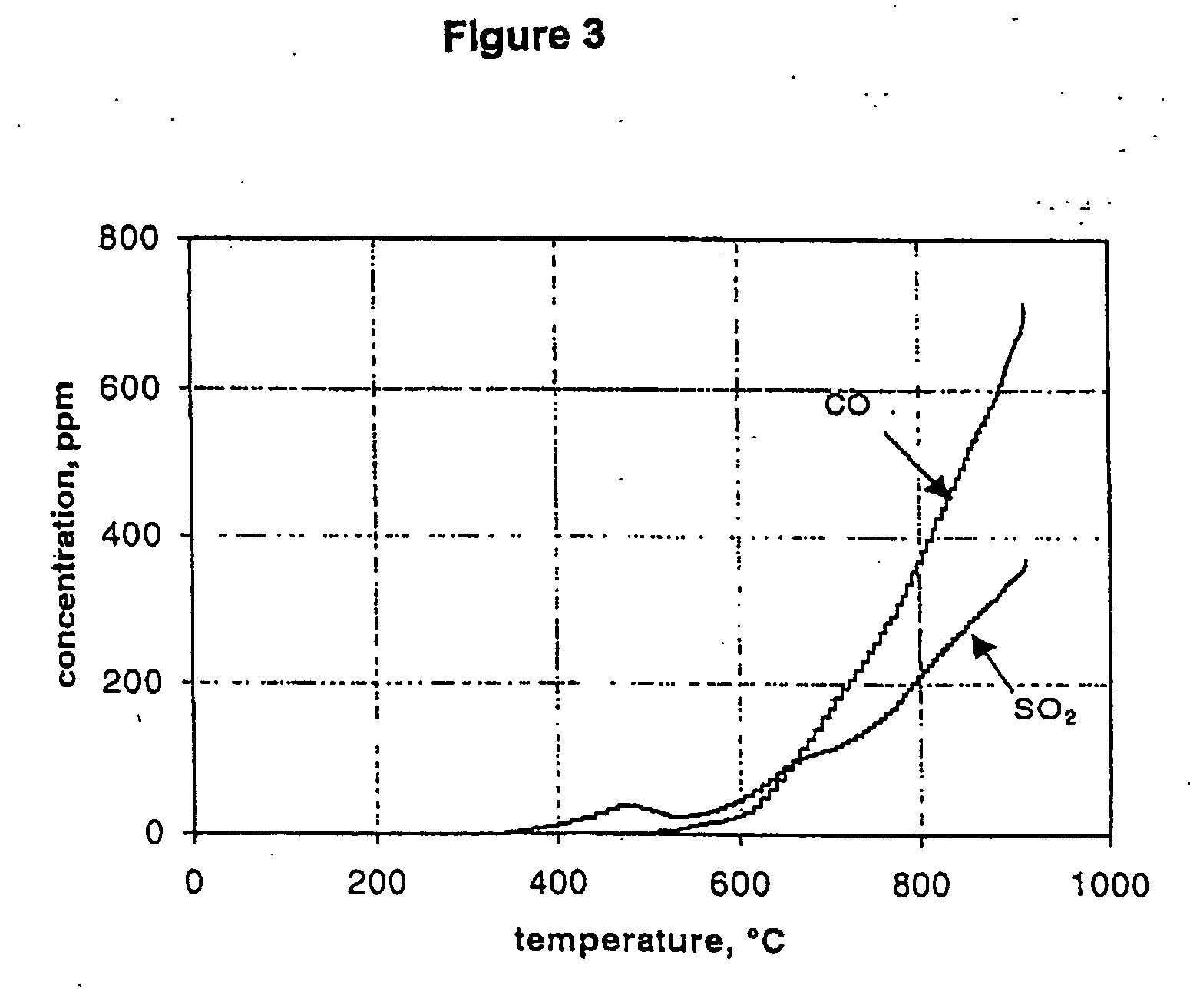Regeneration of calcium oxide or calcium carbonate from waste calcium sulphide
a technology of waste calcium sulphide and calcium carbonate, which is applied in the direction of sulfur compounds, halogen/halogen-acids, inorganic chemistry, etc., can solve the problems of environmental damage, the inability to meet the needs of reducing the toxicity of halogen sulphide,
- Summary
- Abstract
- Description
- Claims
- Application Information
AI Technical Summary
Benefits of technology
Problems solved by technology
Method used
Image
Examples
Embodiment Construction
[0036] Referring first to FIG. 1, the experimental furnace 10 comprises a tubular electric furnace 11 which heats the midportion 11 of a quartz tube 13. The sample of calcium sulphide was placed in a small ceramic boat 14, which was then located at more or less the center of the furnace 11. At the input end 13A of the quartz tube nitrogen or carbon dioxide was fed in to the quartz tube 11 through line 15, to which was attached and evaporator fed with a controlled flow water through line 16. At the output end 13B of the quartz tube the exiting gases in Line 17 were first passed through a condenser 18 cooled by an ice bath 19 and then passed through line 20 to the analytical equipment(not shown).
[0037] In operation, a sample of calcium sulphide having a particle size of less than about 45 μm is placed in the ceramic boat and the system flushed for about 20 minutes with carbon dioxide or carbon monoxide The carbon dioxide used had total impurities of less than 100 ppm and therefore co...
PUM
 Login to View More
Login to View More Abstract
Description
Claims
Application Information
 Login to View More
Login to View More - R&D
- Intellectual Property
- Life Sciences
- Materials
- Tech Scout
- Unparalleled Data Quality
- Higher Quality Content
- 60% Fewer Hallucinations
Browse by: Latest US Patents, China's latest patents, Technical Efficacy Thesaurus, Application Domain, Technology Topic, Popular Technical Reports.
© 2025 PatSnap. All rights reserved.Legal|Privacy policy|Modern Slavery Act Transparency Statement|Sitemap|About US| Contact US: help@patsnap.com



